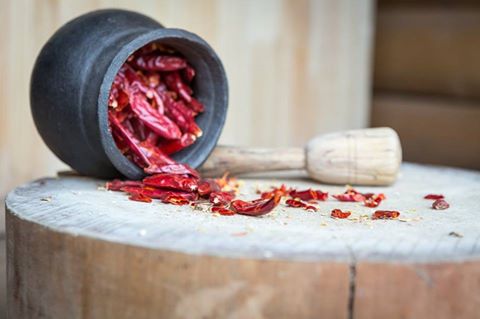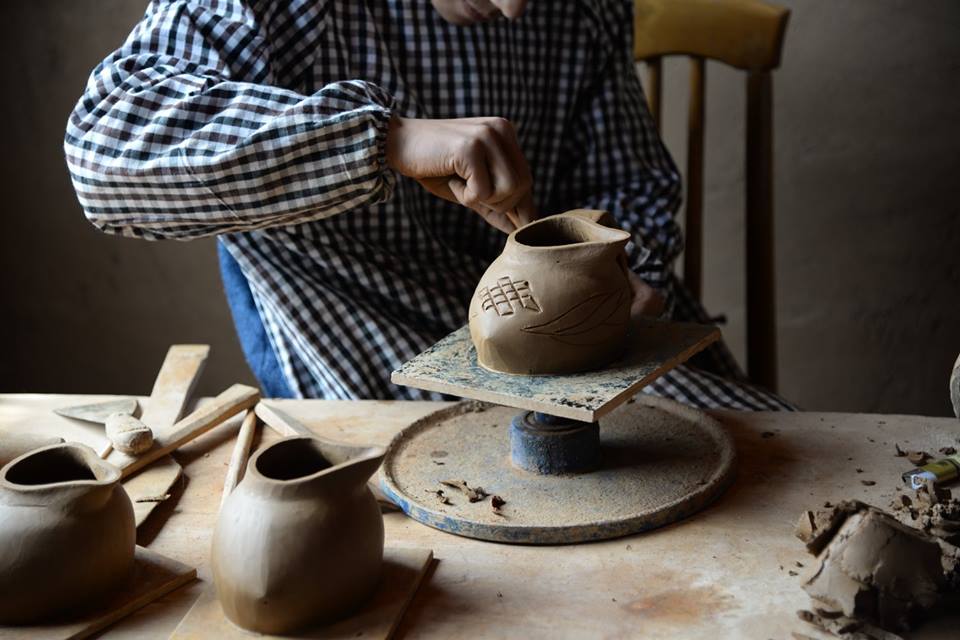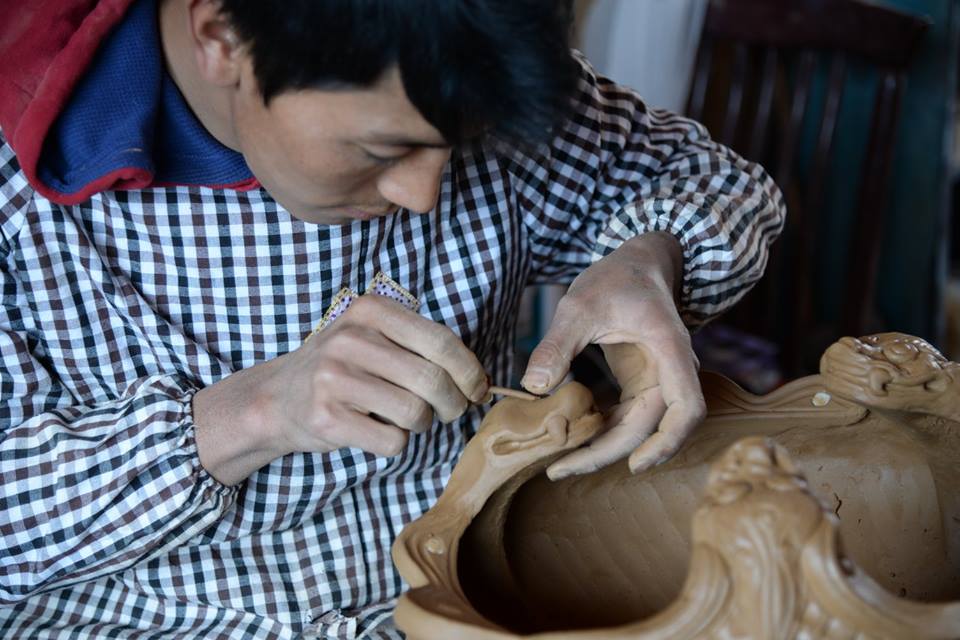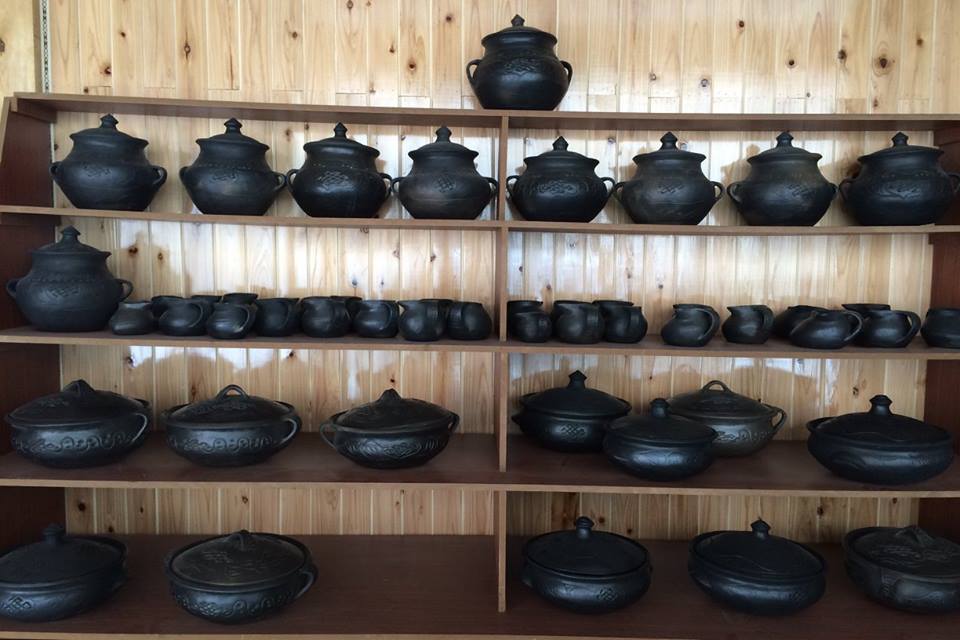Black Pottery
When looking to bring more charm to our Norden Camp dishware, we thought of Tibetan Black Pottery, which had undergone a revival in Gyethang, now commonly known as Shangri La. It was Spring and the guests were not due for another month, so we decided to drive down there, 1,500 km directly south of Labrang. It took three days and was a memorable trip, though I wish we had spent more time on the road, there was so much to see.
When we reached Gyethang, we saw black pottery everywhere, not always the most practical forms for dishware and visited a kiln, where we saw it being made. Clay has always played an important role in Tibetan craft. It is used for statues, mixed with high fiber content Tibetan paper, and sun dried. Tea pots and earth ware requore more firmness and impermeability, so the pieces are fired in a kiln after completion. Each area had its particulars in terms of clay, and as in many places in China, Japan and around the world, some have very special qualities and are keenly sought after. In Gyethang, the clay naturally turns black after firing. Most of the pieces we saw were rather crude, but some small wall decorations bearing the Eight Auspicious Symbols were very fine, and took more time and the hand of a talented artisan to make.
Had we had time, I would have loved to work with the clay artists and make clayware that better lend itself to everyday use, but we didn’t, so Dechen, Yidam and I loaded the car with ready-made pieces; bowls, small flower vases, braseros, and hot pot ware.







